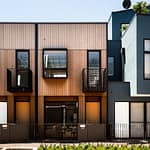The next few years will see Australia’s regional cities close the gap on Sydney and Melbourne’s runaway property prices , according to John McGrath writing in the 2018 McGrath Report.
Since mid-2012, Sydney and Melbourne have recorded property price rises of 66.9 per cent and 39.8 per cent respectively, while much Australia has seen only modest growth.
“The value gap between these two centres and the rest of the country is too wide in my view… I believe the gap is likely to close somewhat over the next few years,” McGrath says, adding that the closure will not be because of a major correction in Sydney and Melbourne but that other cities will see price growth.
While McGrath believes there is a possibility of a minor price correction in Sydney and Melbourne, he says our proximity to Asia, strong population growth – immigration to Australia has now hit a 120-year peak with much of that to Sydney and Melbourne – and relatively stable low interest rates will keep the market steady.
Speaking of interest rates he writes: “Whilst rates will go up in the near future, they are unlikely to return to traditional borrowing levels for some time based on global trends making the cost of money relatively cheap for well into the future.”
The Regional City Boom:
The Sydney-Melbourne property boom and the now relative affordability of regional cities such as Newcastle, Canberra and Southeast Queensland is seeing industry relocate, bringing jobs and more people with them, McGrath says.
In response to this growth, new transport and roads infrastructure is connecting regional cities with their nearby capital. This, combined with technology improvements is enabling people to work remotely and commute more easily, further driving regional city growth.
Southeast Queensland Spotlight:
“South East Queensland remains the most compelling market in the country for both investors and young families,” McGrath writes, adding that Brisbane’s affordability will underpin rising demand for the next few years.
Internal migration figures reflect that, with owner occupiers moving to Southeast Queensland in droves, according to ABS data cited in the report.
In fact, the Gold Coast and the Sunshine Coast led the country for population growth with 6,428 and 6,200 new residents respectively, while Queensland also currently has the strongest first home buyer market in Australia.
Furthermore, McGrath agents are reporting “far more interest from Sydney and Melbourne investors” who are attracted to the area’s capital growth prospects and strong rental yields.
McGrath’s Picks:
- Wynnum
- North Lakes
- Coomera
- Peregian Springs
- Caloundra
Canberra Spotlight:
“Canberra is on track to record the highest house price growth of all capital cities between now and 2020, with predictions of a 16 per cent increase,” according to the McGrath report, citing BIS Oxford Economic’s Residential Property Prospects 2017 to 2020.
They cite population growth – which was 40,000 people or 11 per cent between 2011 and 2016, the largest of all states and territories – high incomes and a low housing stock as key drivers, but warn that apartment growth in the same time “will be extremely modest at just 2 per cent”.
McGrath’s Picks:
- Holt
- Ngunnawal
- Rivett
- Phillip
- Macquarie
Important Note and Warning: This information is general in nature and should not be considered personal tax advice. We highly recommend you discuss these concepts with your accountant, property investment adviser and investment finance mortgage broker jointly to ensure any considered concepts are suitable for your personal financial situation, as one effect of the concept may negatively impact another part of your plan.





